Tools Required
| • | J 24402-A Glass Sealant (Cold Knife) Remover |
| • | J 39032 Stationary Glass Removal Tool |
| • | Isopropyl Alcohol or Equivalent |
| • | Cartridge-type Caulking Gun |
| • | Commercial-type Utility Knife |
Removal Procedure
Caution: If a window is cracked but still intact, crisscross the window with
masking tape in order to reduce the risk of damage or personal injury.
Important: Before cutting out a stationary window, apply a double layer of masking tape around the perimeter of the painted surfaces and the interior trim.
- Open the rear compartment lid in order to access the reveal molding.
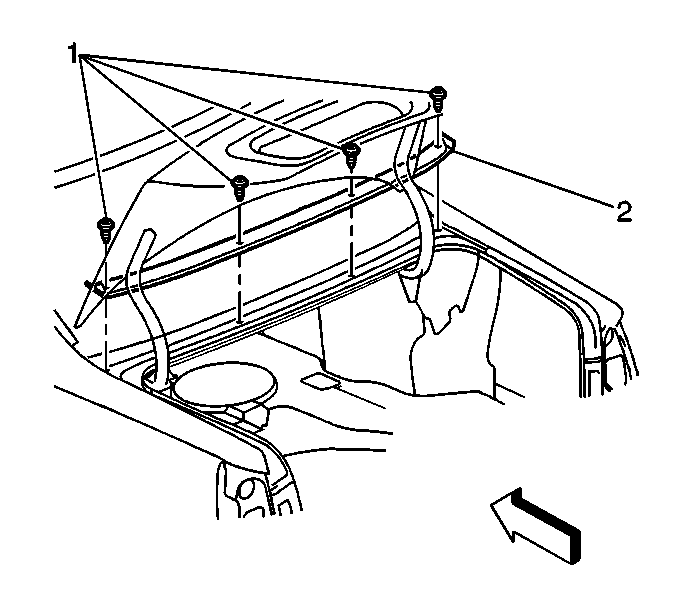
- Remove the four fasteners (1) securing the rear window lower reveal molding (2) to the body.
- Remove the rear sail panels. Refer to
Sail Panel Replacement .
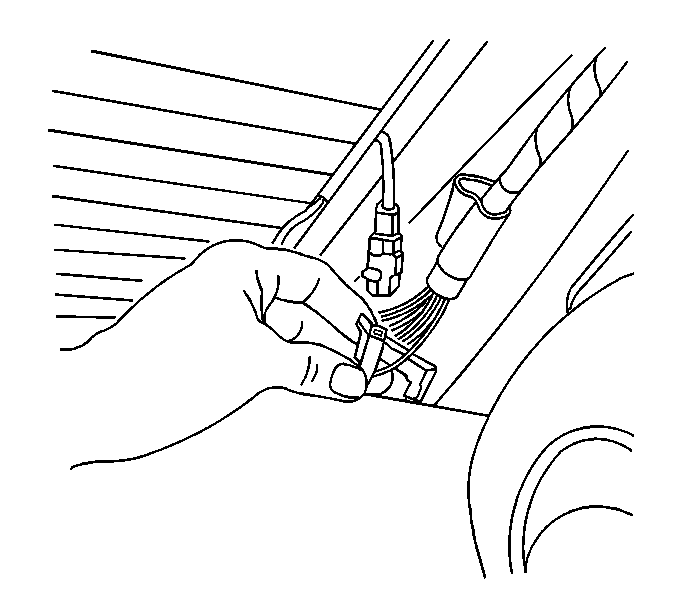
- Disconnect the rear window defogger left electrical connector.
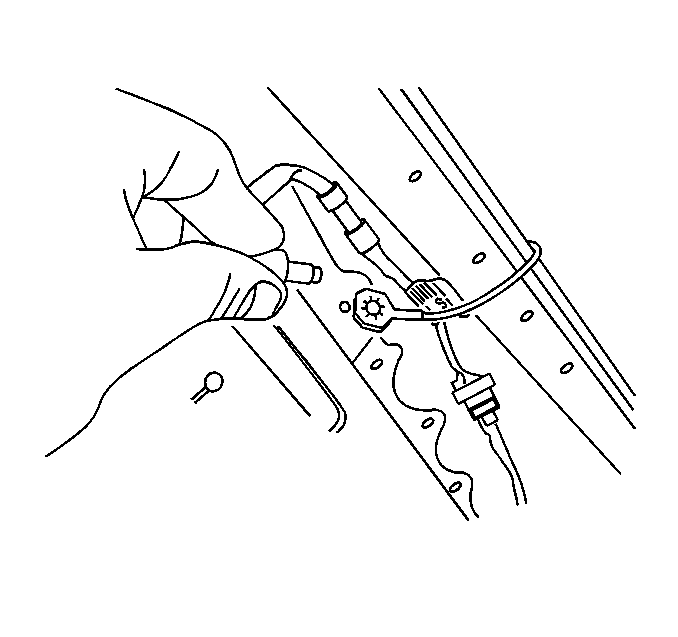
- Disconnect the rear window defogger electrical connectors.
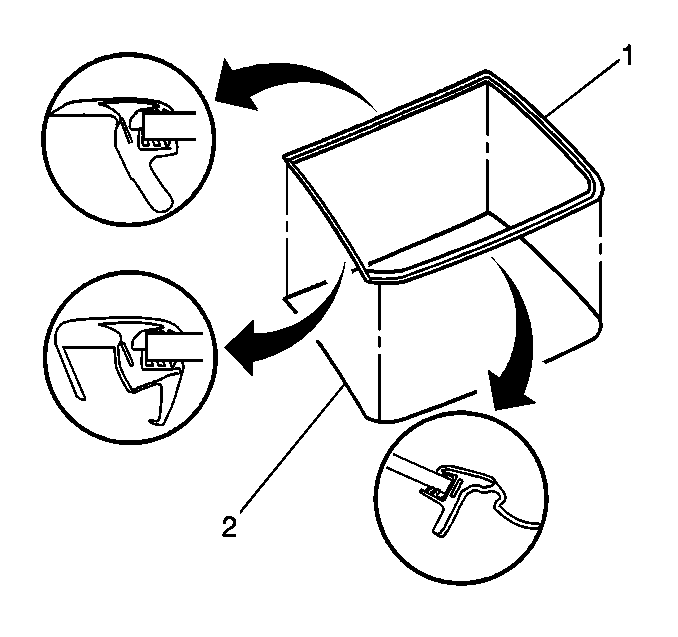
Important: Removal of the rear window requires the replacement of the rear window reveal molding (1).
- Remove the rear window reveal molding (1).
- Disconnect the rear window defogger electrical connectors.
- Remove the OnStar® antenna. Refer to
Cellular Communications/Digital Radio Antenna Replacement .
Caution: If broken glass falls into the defroster outlets, it can be blown into
the passenger compartment and cause personal injury.
- Cover to protect the following parts from broken glass:
| 9.2. | Defroster outlets and A/C outlets. |
| 9.3. | Seats and carpeting. |
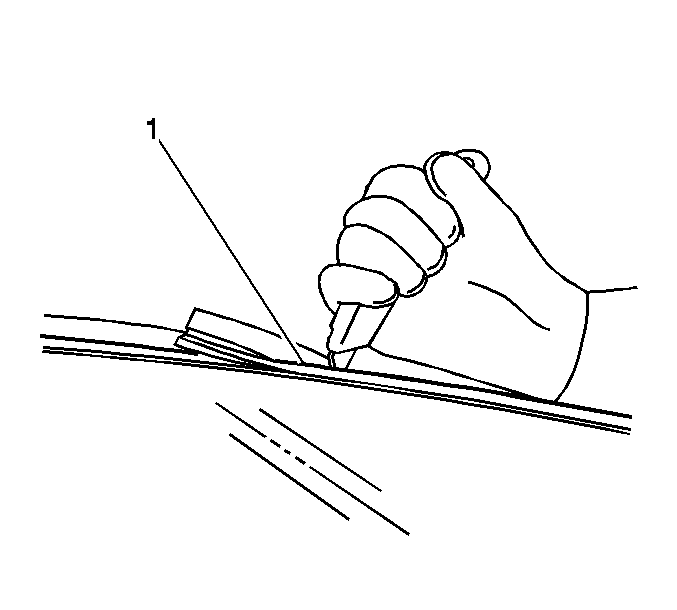
Caution: When working with any type of glass or sheet metal with exposed or rough
edges, wear approved safety glasses and gloves in order to reduce
the chance of personal injury.
- Remove the rear window reveal molding.
| 10.1. | Grasp the lower corner of the rear window reveal molding by hand and slowly pull the reveal molding away from the rear window. |
| 10.2. | If the rear window reveal molding (1) will not release, use a utility knife in order to cut around the rear window in order to remove the rear window reveal molding. |

Important: Keep the cutting edge of the tool against the window.
- This will allow the urethane adhesive to be separated from the window.
| • | Leave a base of urethane on the pinchweld flange. |
| • | The only suitable lubrication is clear water. |
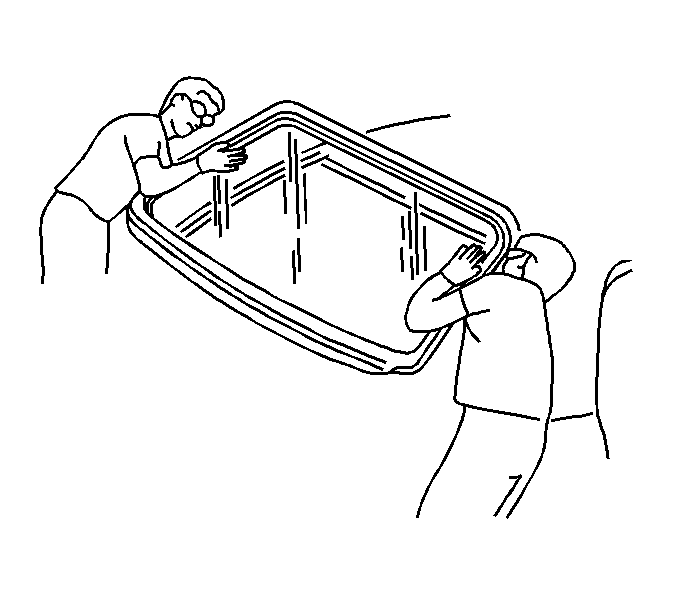
- With the aid of an assistant, use the suction cups in order to lift the rear window from the opening.
Installation Procedure

- With the aid of assistant, dry fit the rear window (2) to the opening in order to determine the correct way to position the window in the opening.
- Use masking tape (1) in order to mark the location of the rear window (2) in the opening.
- Slit the masking tape at the top edge of the rear window.
- With the aid of assistant, remove the rear window from the opening.
- Place the rear window inside up on a clean, protected surface.
- Install the rear window into the opening. Refer to
Adhesive Installation of Stationary Windows .

- Connect the rear window defogger left electrical connector.

- Connect the rear window defogger right electrical connector.
- Install the OnStar® antenna. Refer to
Cellular Communications/Digital Radio Antenna Replacement .
- Install the rear sail panels. Refer to
Sail Panel Replacement .

- Install the rear window lower reveal molding (2).
Notice: Use the correct fastener in the correct location. Replacement fasteners
must be the correct part number for that application. Fasteners requiring
replacement or fasteners requiring the use of thread locking compound or sealant
are identified in the service procedure. Do not use paints, lubricants, or
corrosion inhibitors on fasteners or fastener joint surfaces unless specified.
These coatings affect fastener torque and joint clamping force and may damage
the fastener. Use the correct tightening sequence and specifications when
installing fasteners in order to avoid damage to parts and systems.
- Install the four rear window lower reveal molding fasteners (1).
Tighten
Tighten the fasteners to 2 N·m (18 lb in).
- Remove the double layer of masking tape around the perimeter of the painted surfaces and the interior trim.
- Close the rear compartment lid.











